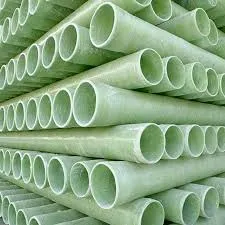
-
 Afrikaans
Afrikaans -
 Albanian
Albanian -
 Amharic
Amharic -
 Arabic
Arabic -
 Armenian
Armenian -
 Azerbaijani
Azerbaijani -
 Basque
Basque -
 Belarusian
Belarusian -
 Bengali
Bengali -
 Bosnian
Bosnian -
 Bulgarian
Bulgarian -
 Catalan
Catalan -
 Cebuano
Cebuano -
 China
China -
 China (Taiwan)
China (Taiwan) -
 Corsican
Corsican -
 Croatian
Croatian -
 Czech
Czech -
 Danish
Danish -
 Dutch
Dutch -
 English
English -
 Esperanto
Esperanto -
 Estonian
Estonian -
 Finnish
Finnish -
 French
French -
 Frisian
Frisian -
 Galician
Galician -
 Georgian
Georgian -
 German
German -
 Greek
Greek -
 Gujarati
Gujarati -
 Haitian Creole
Haitian Creole -
 hausa
hausa -
 hawaiian
hawaiian -
 Hebrew
Hebrew -
 Hindi
Hindi -
 Miao
Miao -
 Hungarian
Hungarian -
 Icelandic
Icelandic -
 igbo
igbo -
 Indonesian
Indonesian -
 irish
irish -
 Italian
Italian -
 Japanese
Japanese -
 Javanese
Javanese -
 Kannada
Kannada -
 kazakh
kazakh -
 Khmer
Khmer -
 Rwandese
Rwandese -
 Korean
Korean -
 Kurdish
Kurdish -
 Kyrgyz
Kyrgyz -
 Lao
Lao -
 Latin
Latin -
 Latvian
Latvian -
 Lithuanian
Lithuanian -
 Luxembourgish
Luxembourgish -
 Macedonian
Macedonian -
 Malgashi
Malgashi -
 Malay
Malay -
 Malayalam
Malayalam -
 Maltese
Maltese -
 Maori
Maori -
 Marathi
Marathi -
 Mongolian
Mongolian -
 Myanmar
Myanmar -
 Nepali
Nepali -
 Norwegian
Norwegian -
 Norwegian
Norwegian -
 Occitan
Occitan -
 Pashto
Pashto -
 Persian
Persian -
 Polish
Polish -
 Portuguese
Portuguese -
 Punjabi
Punjabi -
 Romanian
Romanian -
 Russian
Russian -
 Samoan
Samoan -
 Scottish Gaelic
Scottish Gaelic -
 Serbian
Serbian -
 Sesotho
Sesotho -
 Shona
Shona -
 Sindhi
Sindhi -
 Sinhala
Sinhala -
 Slovak
Slovak -
 Slovenian
Slovenian -
 Somali
Somali -
 Spanish
Spanish -
 Sundanese
Sundanese -
 Swahili
Swahili -
 Swedish
Swedish -
 Tagalog
Tagalog -
 Tajik
Tajik -
 Tamil
Tamil -
 Tatar
Tatar -
 Telugu
Telugu -
 Thai
Thai -
 Turkish
Turkish -
 Turkmen
Turkmen -
 Ukrainian
Ukrainian -
 Urdu
Urdu -
 Uighur
Uighur -
 Uzbek
Uzbek -
 Vietnamese
Vietnamese -
 Welsh
Welsh -
 Bantu
Bantu -
 Yiddish
Yiddish -
 Yoruba
Yoruba -
 Zulu
Zulu
fiberglass reinforced plastic tanks
Understanding Fiberglass Reinforced Plastic Tanks Benefits and Applications
Fiberglass reinforced plastic tanks, commonly referred to as FRP tanks, are an innovative solution for various industrial and commercial applications. These tanks are made from a combination of fiberglass and thermosetting resin, creating a composite material that is lightweight, durable, and resistant to corrosion. As industries increasingly seek efficient and reliable storage solutions, FRP tanks have gained significant traction due to their numerous advantages.
What are FRP Tanks?
FRP tanks are constructed by combining woven fiberglass strands and resin, resulting in a strong yet flexible material. The manufacturing process often involves techniques such as hand layup or filament winding, allowing for precise control over the thickness and structure of the tank. This tailored approach enables manufacturers to produce tanks that meet specific requirements for different applications, whether it be for chemical storage, wastewater treatment, or even agricultural use.
Key Benefits of FRP Tanks
1. Corrosion Resistance One of the most significant advantages of FRP tanks is their ability to withstand corrosive environments. Unlike metal tanks, which may rust or corrode when exposed to certain chemicals, FRP offers superior resistance to various substances, making it ideal for the chemical industry.
2. Lightweight and Portable FRP tanks are considerably lighter than traditional concrete or metal tanks. This lightweight nature facilitates easier installation and transportation, reducing labor costs and time during setup.
3. Durability FRP tanks have a longer lifespan compared to other materials. They are resistant to impacts and weathering, ensuring that they maintain their structural integrity over an extended period.
fiberglass reinforced plastic tanks

4. Cost-Effectiveness Although the initial investment in FRP tanks may be higher than that of traditional options, their long-term savings are substantial. Lower maintenance requirements, reduced likelihood of leaks, and extended operational life contribute to a favorable return on investment.
5. Customizability Manufacturers can create FRP tanks in various shapes and sizes, tailoring them to specific operational needs. Whether it’s for water storage, chemical containment, or food processing, FRP tanks can be custom-designed to fit the particular parameters of the application.
Applications of FRP Tanks
FRP tanks are utilized across a wide range of industries. In the chemical sector, they serve as storage solutions for hazardous materials, ensuring safety and compliance with stringent regulations. In wastewater treatment facilities, FRP tanks are used for biological processes, promoting efficient treatment of sewage and industrial effluents.
The agriculture sector also benefits from FRP tanks, which can be employed for the storage of fertilizers and pesticides, helping to minimize risks associated with spills or leaks. Furthermore, FRP tanks are commonly found in water storage applications, where they offer a secure and reliable method for preserving clean water resources.
Conclusion
Fiberglass reinforced plastic tanks represent a technologically advanced solution for modern storage needs. With their unmatched resistance to corrosion, lightweight design, and versatility, FRP tanks are poised to become an integral component of various industries. As businesses increasingly prioritize efficiency and safety, the adoption of FRP tanks will likely continue to rise, showcasing their role as a sustainable and effective storage solution for the future.
Latest news
-
Exploring the Benefits of Top Hammer Drifter Rods for Enhanced Drilling PerformanceNewsJun.10,2025
-
High-Precision Fiberglass Winding Machine for GRP/FRP Pipe Production – Reliable & Efficient SolutionsNewsJun.10,2025
-
FRP Pipes & Fittings for Shipbuilding - Corrosion-Resistant & LightweightNewsJun.09,2025
-
Premium FRP Flooring Solutions Durable & Slip-ResistantNewsJun.09,2025
-
Premium Fiberglass Rectangular Tanks Durable & Lightweight SolutionNewsJun.09,2025
-
Tapered Drill String Design Guide Durable Performance & UsesNewsJun.09,2025









